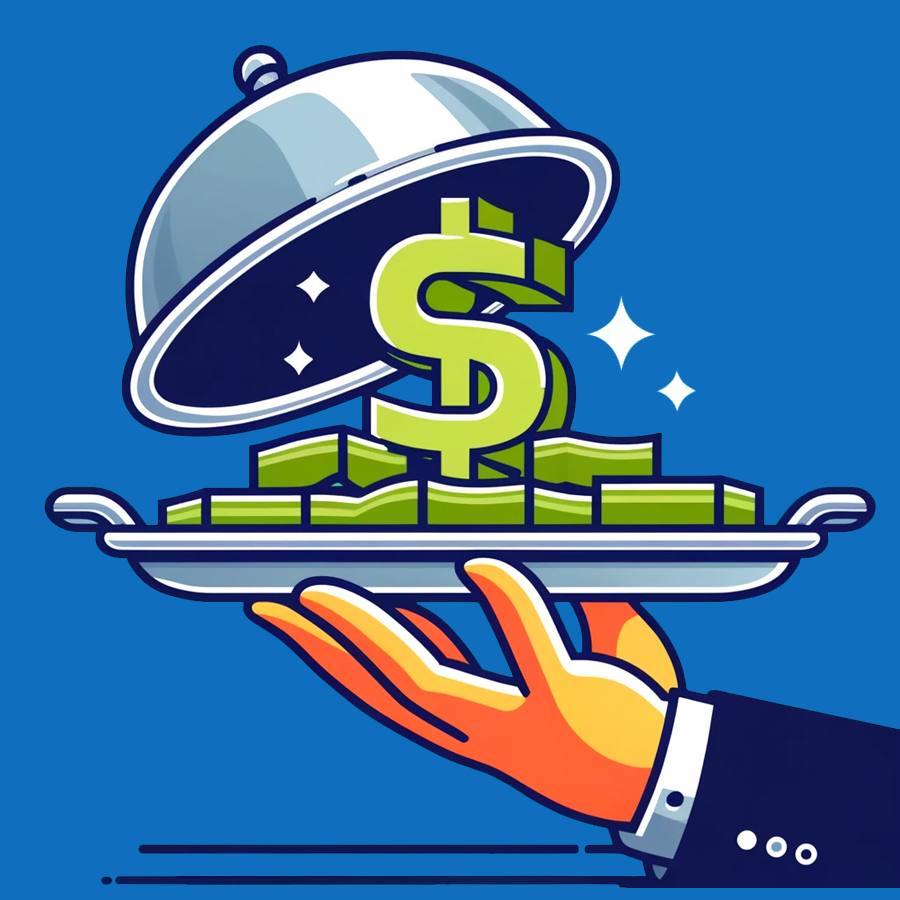In the fiercely competitive world of catering, a strategic approach to sales can be the difference between a thriving enterprise and one that struggles to stay afloat. Catering is an industry where people’s eagerness for a delicious experience meets the challenges of budgets and event planning, making it exciting and complex for vendors. Among the most powerful sales strategies is the art of upselling. It is not just about making more money; it’s about enhancing customer satisfaction and delivering a superior service that meets the client’s needs.
This comprehensive guide will explore the nuanced upselling techniques in the catering domain. From understanding client needs to crafting compelling offers, this post will provide caterers with the tools they need to drive revenue while providing exceptional service. Whether you’re a seasoned industry professional or starting out, these strategies can help boost your bottom line and transform your catering business.
Understanding the Upselling Concept in Catering
Before we get into the details, it’s crucial to understand upselling and why it’s an indispensable sales technique.
Defining Upselling
It is the practice of persuading a customer to buy a higher-end product or service or add on features or services that will complement their purchase. In catering, this can involve upgrading to premium menu items, increasing the quantity of food ordered, or suggesting additional services like bartending or event planning.
Why Upselling Matters in Catering
For caterers, it can significantly increase revenue per event. More importantly, it can elevate the customer’s experience by presenting options they may have yet to consider, providing a more satisfying solution to their event needs.
Personalization for Each Client
Tailoring your approach to suit each client’s preferences and needs is vital. Personalization makes the upsell feel less like a sales pitch and more like a valuable addition to the customer’s event.
The Power of Data-Driven Personalization
Leveraging data about past client preferences and purchasing habits can guide your strategy. Software that tracks and analyzes customer data can provide valuable insights into what will resonate with various customer profiles.
Conducting a Needs Analysis
Before suggesting an upsell, discuss the event’s specific requirements with the client. This analysis will help you craft a tailored upsell and demonstrate to the customer that you are committed to meeting their unique needs.
Crafting Irresistible Offers
An enticing offer is hard to refuse. It must provide clear value to the customer and be presented persuasively and attractively.
Highlighting the Benefits
Focus on the benefits it will bring rather than just its features. Whether providing guests with a more luxurious dining experience or alleviating the customer’s event-planning stress, the value proposition should be clear and compelling.
Pricing and Packaging Strategies
Consider different pricing and packaging options. Bundling related items or offering a discount for purchasing can increase its appeal. Just ensure the pricing reflects a balance of profitability and customer value.
Marketing Strategy
Your marketing efforts can lay the groundwork for successful upsells. Integrating strategic messaging in everything from your website to your sales materials can make a considerable difference.
Optimizing Your Website for Upselling
Incorporate offers directly into your catering package descriptions on your website. This could be as simple as offering different service tiers, clearly distinguishing what each tier includes.
Sales Pitch
Train your sales team to seamlessly integrate upsells into their pitches. This can be done by tying it to a benefit that aligns with the client’s needs, which were uncovered during the needs analysis phase.
The Timing of Upsell Offers
The timing of your pitch is as important as the offer itself. An ill-timed upsell can be off-putting, while a well-timed one can be highly effective.
Pre-Event
Pre-event upsells should be proposed at the planning stage, ideally after the main event elements have been agreed upon. This is an opportune time to offer add-ons that enhance the event the customer may have yet to consider.
On-Site
At the event, upsells can manage any last-minute changes or respond to the customer’s current needs, such as a sudden influx of guests or unexpected dietary requirements.
Integrating Technology into Your Practices
Leveraging technology can streamline and enhance your upselling efforts. From customer relationship management (CRM) systems to specialized apps, the right tech can make it a seamless part of your catering business processes.
CRM Systems for Targeted Upselling
A robust CRM system can store and analyze customer data, track interactions, and flag opportunities. It can also remind your team when to contact clients with tailored offers.
Mobile and Online Ordering Platforms
Online and mobile ordering platforms can suggest upsells as customers place their orders, making it incredibly easy to accept offers with just a few clicks.
Measuring and Tracking Success
It’s essential to track the success of your efforts to refine your strategies over time. What gets measured gets managed, and what gets managed gets better.
Setting KPIs
Identify key performance indicators (KPIs) for your upselling activities, such as the percentage of clients who accept, the average value, and the overall revenue attributed to upselling.
Using Client Feedback
Client feedback can provide invaluable information about the effectiveness of your strategies. This can come from direct client conversations, post-event surveys, or online reviews.
Overcoming Common Challenges
Addressing Customer Concerns
Customers may need more time to avoid upsells due to budget constraints or a fear of being seen as extravagant. Your sales team should be prepared to address these concerns and articulate the value in a way sensitive to the customer’s situation.
Building a Culture
Fostering a culture that recognizes and rewards successful upselling efforts is essential to ensuring it becomes part of your company’s DNA. This can be done through incentive programs, training, and clear communication of goals.
Case Studies of Successful Catering Upselling
Examining real-world examples of successful upselling in catering can provide inspiration and practical insights for your own strategies.
Premium Menu Items and Packages
Case studies demonstrating how offering premium menu items or all-inclusive packages led to increased sales and customer satisfaction can offer ideas for your portfolio.
Strategic Partnering
Collaborating with strategic partners, such as event planners or florists, can create opportunities for upselling that add value to your catering services and the overall event.
The Future of Upselling in Catering
The catering landscape is constantly evolving, and so are the strategies for successful upselling. Staying ahead of emerging trends can give your business a competitive edge.
AI and Machine Learning for Predictive Upselling
Artificial intelligence and machine learning, which can predict customer behavior and anticipate opportunities, represent the next frontier in catering sales.
Ethical and Non-Intrusive Upselling
In an age of increased customer awareness, focusing on ethical, non-intrusive techniques will be crucial for maintaining customer trust and brand reputation.
With these techniques and insights, caterers can transform upselling from a simple transactional element into a powerful growth and customer satisfaction tool. By understanding their clients’ needs, crafting compelling offers, and seamlessly integrating upselling into their sales and marketing efforts, caterers can boost their bottom line and solidify their position as industry leaders.
Remember, it isn’t about pushing products onto customers. It’s about understanding their needs and providing them with a better solution than they initially sought. When used effectively, it can be a win-win for you and your clients, leading to increased sales and more impactful events.

